When it comes to the smooth operation of a Jeep’s clutch system, the health of the clutch linkage is paramount. Over time, wear and tear can take a toll on the various components that make up the linkage, potentially leading to issues such as difficulty in shifting gears or a loss of clutch pedal responsiveness. In this comprehensive guide, we will delve into the essential steps of how to inspect jeep clutch linkage wear.
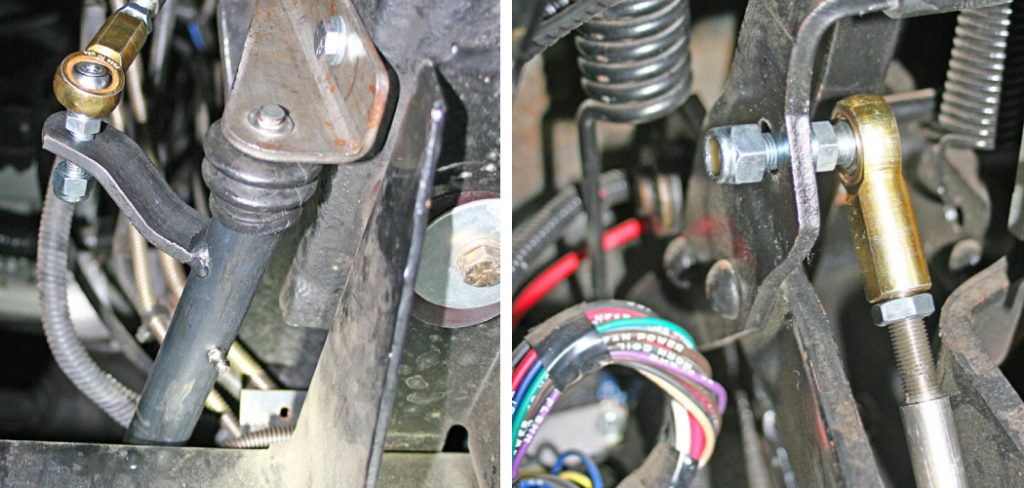
Understanding the signs of wear, examining key linkage components, and identifying potential problem areas are crucial aspects of maintaining a reliable and efficient clutch system.
Whether you are an avid off-roader or a daily commuter, this exploration of clutch linkage inspection will empower you to proactively address wear-related concerns, ensuring your Jeep’s clutch operates at its peak performance for miles to come.
Importance of Maintaining a Healthy Clutch Linkage for Optimal Performance
Maintaining a healthy clutch linkage is vital for optimal performance and longevity of your Jeep’s transmission system. A properly functioning clutch linkage ensures that the transfer of power from the engine to the transmission is smooth and efficient, providing a seamless driving experience.
Without regular inspection and maintenance, the linkage can deteriorate, leading to a host of problems including slippage, increased wear on other transmission components, and even complete failure that could leave you stranded.
Therefore, it is of utmost importance to routinely check the condition of your Jeep’s clutch linkage and address any issues promptly, guaranteeing your vehicle’s capability to handle both daily challenges and adventurous terrains with ease.
Understanding Clutch Linkage in Your Jeep
Before you grab your wrench and head to the garage, it’s essential to understand the role of your clutch linkage. Whether you’re taking your Jeep out for a casual drive or gearing up for extreme off-road conditions, the clutch is your go-to when it comes to managing the power delivery.
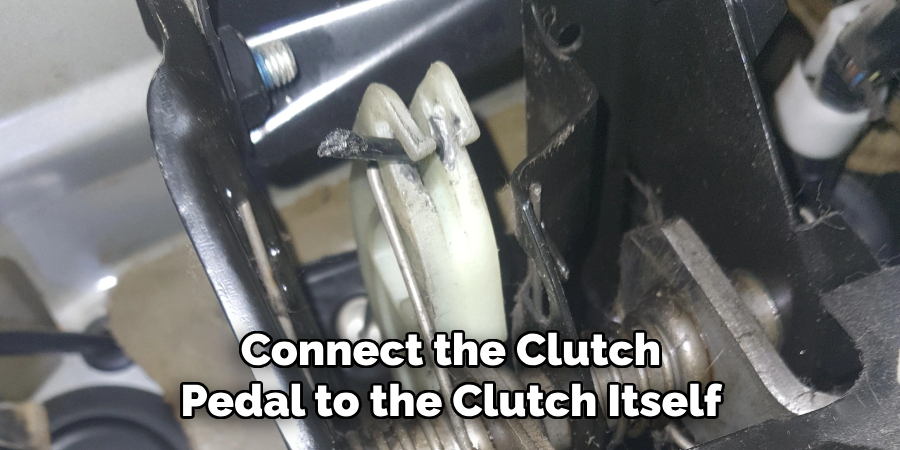
The clutch linkage in a Jeep is a set of mechanical components that connect the clutch pedal to the clutch itself. As you depress the clutch pedal, power is transferred through the linkage to disengage the clutch plate, allowing you to shift gears seamlessly. Over time, this linkage can wear out, causing disruptions in power transitions.
Signs That Your Jeep’s Clutch Linkage May Be Worn
When it comes to your clutch’s health, your Jeep will usually give you signs that something isn’t quite right. These signs can be subtle at first but may become much more pronounced without the proper attention.
Pay Attention to the Pedal
If you notice a change in the way your clutch pedal feels – it’s softer or firmer than usual – this could be an early sign of developing issues. A pedal that doesn’t bounce back as quickly or feels “spongy” can indicate worn clutch linkage.
Difficulty Shifting Gears
A clutch linkage wearing out can lead to difficulties in shifting gears smoothly. If you find it’s getting tougher to shift, especially when your Jeep is cold, it might be time for an inspection.
Noises and Vibrations
Strange noises or vibrations emanating from the clutch area can be symptoms of worn parts. These could include squeaks, creaks, or even grinding as gears are engaged.
Preparation for Inspection
Before conducting a thorough inspection of your Jeep’s clutch linkage, there are several preparatory steps you should take to ensure both your safety and the effectiveness of your inspection.
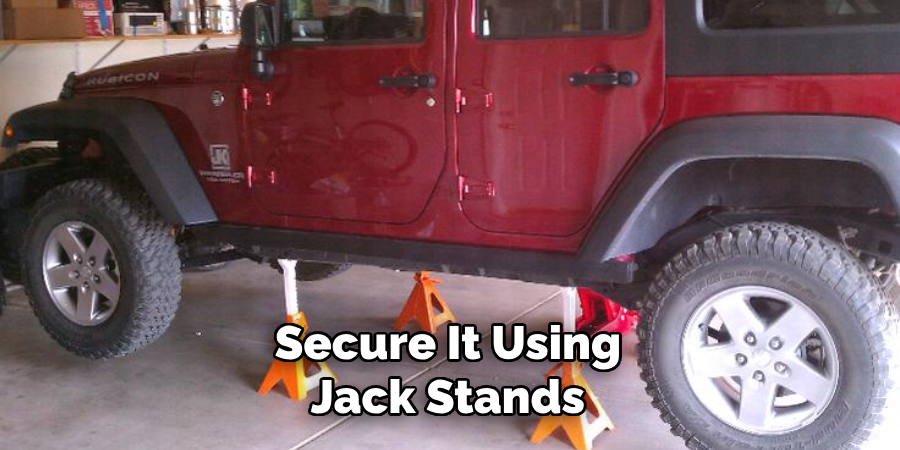
First, park your Jeep on a level surface and, if possible, lift it with a jack and secure it using jack stands for better accessibility to the underside of the vehicle. Gather your tools, including a flashlight, inspection mirror, and clean rags.
You may also need an assortment of wrenches and a creeper to slide under the vehicle comfortably. Always disconnect the battery before you begin working to prevent any electrical accidents. With the prep work done, you are now ready to proceed with detailed scrutiny of the clutch linkage components.
A Step-By-Step Guide on How to Inspect Jeep Clutch Linkage Wear
Visually inspecting your Jeep’s clutch linkage is a fairly simple process, but it requires thoroughness and attention to detail.
Step 1: Visual Inspection:
Start by visually inspecting the clutch linkage components for any signs of wear, damage, or corrosion. Look for worn bushings, cracked or bent linkage rods, loose or missing fasteners, and any other visible abnormalities.
If you notice any issues during the visual inspection, they should be addressed and repaired before moving on to the next steps. This will help ensure that your clutch system is in proper working condition and prevent any potential problems down the road.
Step 2: Check Pedal Feel:
Depress the clutch pedal and pay attention to its feel and resistance. A spongy or excessively stiff pedal may indicate issues with the clutch linkage, such as worn bushings or binding linkage components.

If the pedal feels loose or has excessive play, it may be a sign of a worn clutch release mechanism. However, if the pedal feels too hard or difficult to depress, it could indicate an issue with the hydraulic system, such as a low fluid level or air bubbles in the lines.
It is also important to check for any unusual noises when depressing and releasing the clutch pedal. A squeaking or grinding noise could indicate worn bearings or a faulty release bearing. Additionally, if the pedal vibrates or shakes when depressed, it could be a sign of a damaged flywheel or pressure plate.
Step 3: Inspect Clutch Pedal Pivot Point:
Examine the pivot point of the clutch pedal for signs of wear or excessive play. Worn pivot points can cause the pedal to feel loose or sloppy, affecting clutch engagement and disengagement.
If the pivot point is worn, it may need to be replaced. You can also try lubricating the pivot point with a high-quality grease to improve its movement and reduce friction. Though, if the pivot point is excessively worn or damaged, it will likely need to be replaced.
Additionally, check the condition of any bushings or bearings that may be present at the pivot point. These can also wear out over time and affect the pedal’s movement. If they are worn or damaged, they should also be replaced.
Step 4: Examine Clutch Master Cylinder:
Inspect the clutch master cylinder for leaks, damaged seals, or corrosion. Leaking fluid or loss of hydraulic pressure can result in poor clutch engagement and slipping. If any of these issues are present, the clutch master cylinder will need to be replaced.
To begin, locate the clutch master cylinder. It is typically located near the brake master cylinder on the driver’s side of the engine bay. The clutch master cylinder is responsible for transmitting pressure from your foot on the pedal to the slave cylinder which operates the clutch.
Step 5: Check Clutch Slave Cylinder:
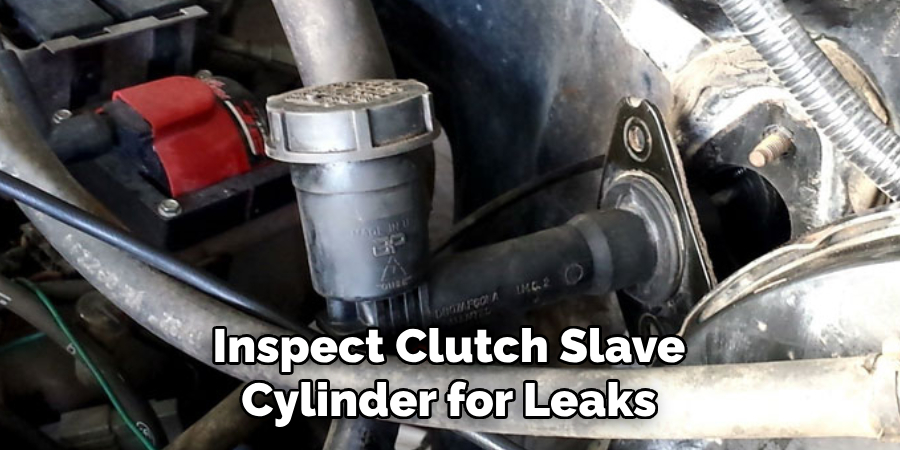
Similarly, inspect the clutch slave cylinder for leaks, damage, or signs of wear. A faulty slave cylinder can lead to improper clutch release or engagement, causing slipping or difficulty shifting gears. If any issues are found, the slave cylinder should be replaced.
In addition to visual inspection, it is important to check the operation of the clutch slave cylinder. This can be done by having someone depress the clutch pedal while you observe the movement of the slave cylinder pushrod. The pushrod should move smoothly and without hesitation. Any resistance or jerking motions could indicate a problem with the slave cylinder that requires replacement.
Step 6: Inspect Linkage Rods and Bushings:
Examine the linkage rods and bushings for wear, looseness, or damage. Worn bushings can cause excessive play in the linkage, affecting clutch pedal feel and responsiveness. If any rods or bushings are damaged, they should be replaced immediately.
It is important to regularly inspect and maintain the linkage rods and bushings in your vehicle. This will ensure smooth operation of the clutch system and prevent potential issues down the road.
Step 7: Test Clutch Engagement:
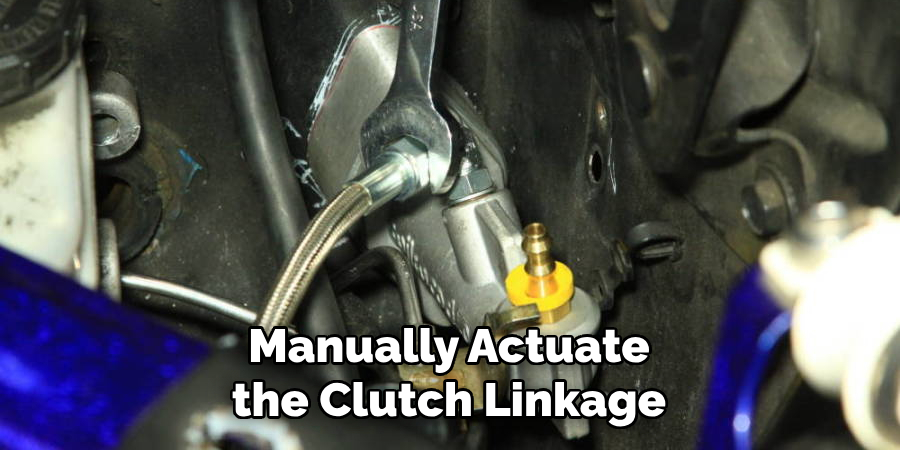
With the engine off, depress the clutch pedal and manually actuate the clutch linkage to ensure smooth engagement and disengagement of the clutch. Listen for any unusual noises or resistance that may indicate binding or worn components. Additionally, the clutch pedal should have a consistent feel throughout its travel. Any looseness or excessive play may indicate worn components that need to be replaced.
Continue to monitor the clutch engagement as you start the engine and put the vehicle in gear. The clutch should engage smoothly without any slipping or grabbing. If there is any difficulty engaging or disengaging the clutch, it could be a sign of a worn or damaged clutch disc, pressure plate, or release bearing.
Step 8: Check for Hydraulic Fluid Leaks:
Inspect the clutch hydraulic lines and connections for signs of fluid leaks or seepage. Leaking fluid can lead to loss of hydraulic pressure, resulting in clutch slipping or difficulty shifting gears.
If you notice any leaks, the affected lines and connections should be replaced immediately to prevent further damage. While inspecting for leaks, also check the fluid level in the clutch master cylinder and top it off if necessary.
Step 9: Test Clutch Release:
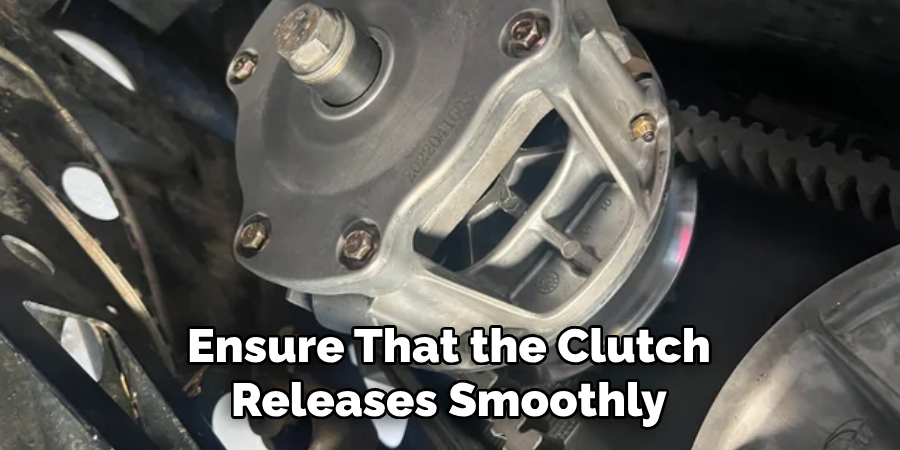
Start the engine and engage the clutch pedal while observing the clutch release mechanism. Ensure that the clutch releases smoothly and fully disengages when the pedal is depressed. Any hesitation or incomplete release may indicate issues with the linkage or hydraulic system.
Additionally, check for any unusual noise or vibration during the clutch release process. However, keep in mind that slight vibrations and noises are normal due to the mechanical process of disengaging the clutch.
When examining the clutch release mechanism, it is important to also check for any signs of wear or damage. This includes checking the condition of the release bearing, pressure plate, and friction disc. Any worn or damaged components should be replaced as they can affect the overall performance of the clutch.
Step 10: Verify Adjustments:
Check and adjust the clutch linkage according to the manufacturer’s specifications. Proper adjustment ensures optimal clutch engagement and disengagement, preventing slipping and premature wear of clutch components. If the clutch pedal feels too soft or hard, it may indicate an issue with clutch adjustment.
To adjust the clutch linkage, start by locating the adjustable push rod on the clutch master cylinder. Loosen the locknut and turn the pushrod in or out to achieve proper free play in the clutch pedal. Refer to the vehicle’s service manual for specific measurements and procedures.
By following these ten steps, you can effectively inspect the clutch linkage wear in your Jeep and identify any potential issues that may affect its performance. Regular maintenance and timely repairs are essential for ensuring smooth clutch operation and extending the lifespan of your Jeep’s transmission system. If you encounter any significant wear or damage during the inspection, consider consulting a professional mechanic for further diagnosis and repair.
Fluid Levels and Quality Assessment
Assess Fluid Quality:
Equally critical in the maintenance of your Jeep’s clutch system is the assessment of the hydraulic fluid quality. Over time, the hydraulic fluid can become contaminated with debris and moisture, leading to degraded performance and potential damage to the clutch system components.
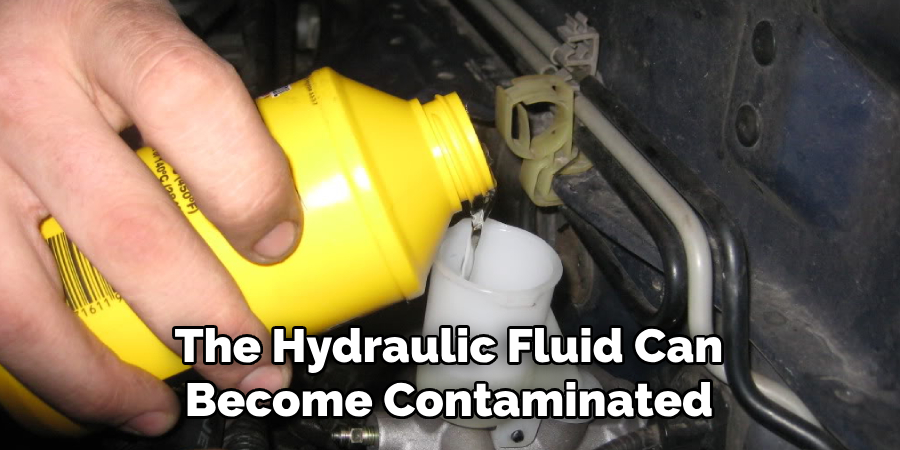
To assess the fluid, draw a small amount from the clutch master cylinder reservoir and inspect its color. The fluid should be clear and have a slight yellowish tinge. If it appears dark, cloudy, or contains particles, it’s time to perform a clutch hydraulic system flush to replace the old fluid with fresh, manufacturer-approved fluid.
Check Fluid Level Consistency:
In addition to assessing the fluid quality, monitor the fluid level over a period of time to gauge if there has been a consistent drop in the reservoir. A noticeable decrease in hydraulic fluid can indicate a slow leak somewhere in the system that may not have been obvious during your initial visual inspection.
If you find that you’re needing to top off the fluid frequently, investigate further to identify and rectify the source of the leak to prevent any long-term damage to the clutch mechanism.
Regular Leak Inspection Routine
To maintain the integrity of your Jeep’s clutch system, establishing a regular leak inspection routine is crucial. Begin by cleaning the area around the clutch master cylinder, slave cylinder, and hydraulic lines to ensure any new leaks can be easily spotted. Visually inspect these components as well as any connections for wetness or accumulation of dirt, which can suggest seepage of hydraulic fluid.
Don’t overlook small drips or weeping connections as these can be precursors to larger issues. If you detect any leaks, it is vital to address them immediately by replacing the faulty components or resealing the connections to restore proper hydraulic function to the clutch system.
Additional Checks for Wear and Tear
Performing a comprehensive visual inspection of the entire clutch assembly can reveal signs of wear and tear that necessitate attention. Look over the clutch fork, the component that transfers the clutch pedal’s movements to the throw-out bearing and pressure plate, for any signs of cracking or bending. It’s also important to examine the pressure plate for even wear and to ensure that the retaining bolts are secure and intact.
The surface of the flywheel should be inspected for cracks, warping, and hot spots, as these can result in clutch chatter and reduced efficiency. Any signs of oil contamination on the clutch components must be addressed, as oil can cause the clutch to slip and reduce its lifespan.
If any parts display significant wear or damage, replacing them is critical for maintaining the clutch’s performance and preventing future, more severe issues.
Preventing Clutch Linkage Issues
Regular maintenance checks and using your Jeep within its limits can go a long way in preventing clutch linkage problems.
Regular Inspections
Don’t wait until you’re in the middle of nowhere to inspect your clutch linkage. Make it part of your regular vehicle check. Twice a year is a good rule of thumb.
Mind Your Driving
Hard shifts, riding the clutch, and ‘dumping’ the clutch plate take their toll. Drive with care and respect your vehicle’s design limits.
Proper Lubrication
Keep your clutch linkage well-lubricated, as dry components can wear much faster than those that are properly maintained.
Conclusion
In conclusion, a thorough inspection of Jeep clutch linkage wear is paramount for maintaining the overall health and performance of the vehicle’s clutch system. By recognizing the subtle signs of wear, conducting visual and functional checks, and addressing potential issues with fluid levels and leaks, owners can proactively prevent and rectify problems associated with clutch linkage wear.
Regular maintenance, such as evaluating the condition of key components like the release bearing, clutch disc, and pressure plate, ensures a smoother driving experience and extends the lifespan of the clutch system.
This comprehensive guide empowers Jeep enthusiasts to take charge of their vehicle’s maintenance, enabling them to identify, troubleshoot, and address clutch linkage wear issues promptly.
By adopting these inspection practices, owners contribute to the longevity and efficiency of their Jeep’s clutch system, ensuring optimal performance both on and off the road. So, there you have it – a quick and easy guide on how to inspect jeep clutch linkage wear.
Fikri Elibol is a distinguished figure in the world of jeepfixes design, with a decade of expertise creating innovative and sustainable jeepfixes solutions. His professional focus lies in merging traditional craftsmanship with modern manufacturing techniques, fostering designs that are both practical and environmentally conscious. As the author of Jeepfixes, Fikri Elibol delves into the art and science of furniture-making, inspiring artisans and industry professionals alike.
Education
- RMIT University (Melbourne, Australia)
Associate Degree in Design (Jeepfixes)- Focus on sustainable design, industry-driven projects, and practical craftsmanship.
- Gained hands-on experience with traditional and digital manufacturing tools, such as CAD and CNC software.
- Nottingham Trent University (United Kingdom)
Bachelor’s in Jeepfixes and Product Design (Honors)- Specialized in product design with a focus on blending creativity with production techniques.
- Participated in industry projects, working with companies like John Lewis and Vitsoe to gain real-world insights.
Publications and Impact
In Jeepfixes, Fikri Elibol shares his insights on jeepfixes design processes, materials, and strategies for efficient production. His writing bridges the gap between artisan knowledge and modern industry needs, making it a must-read for both budding designers and seasoned professionals.
